Dong Van corn fields dye rocky plateau green
Nguyen Chi Nam/VNEXPRESS -
(VOVWORLD) - When summer comes, Dong Van plateau in the northern province of Ha Giang, surrounded by rugged terrain, puts on a new coat with the green color of corn fields.
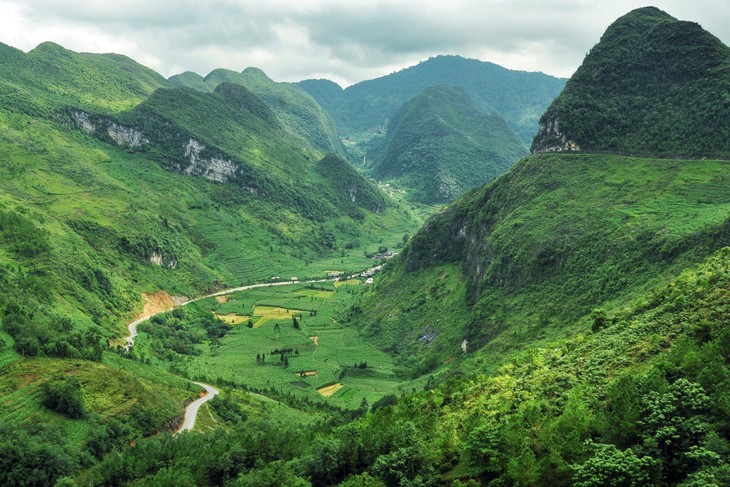 Dong Van Karst Plateau is 1,000-1,600 meters above sea level, covering the four districts of Quan Ba, Yen Minh, Dong Van and Meo Vac, home to 17 ethnic minority groups, including the Hmong. Dong Van is well-known for its severe climate, extreme shortage of arable lands and water resources, making it difficult for Hmong farmers to grow rice, and they instead cultivate corn. Corn plays an important part in daily lives of the Hmong. While serving as a stable ingredient in the local diet, it's also used as livestock feed. Dong Van Karst Plateau is 1,000-1,600 meters above sea level, covering the four districts of Quan Ba, Yen Minh, Dong Van and Meo Vac, home to 17 ethnic minority groups, including the Hmong. Dong Van is well-known for its severe climate, extreme shortage of arable lands and water resources, making it difficult for Hmong farmers to grow rice, and they instead cultivate corn. Corn plays an important part in daily lives of the Hmong. While serving as a stable ingredient in the local diet, it's also used as livestock feed. |
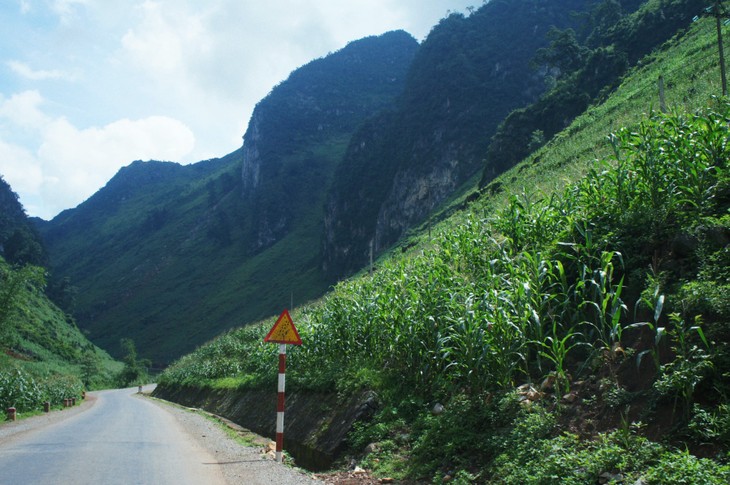 The rocky plateau in spring is colored the pink of peach blossoms and white plum flowers, the purple-pink of buckwheat flowers in autumn, and the bright yellow of mustard flowers in winter. In summer, the green of corn fields takes over the roads, mountains and hills of Dong Van. The rocky plateau in spring is colored the pink of peach blossoms and white plum flowers, the purple-pink of buckwheat flowers in autumn, and the bright yellow of mustard flowers in winter. In summer, the green of corn fields takes over the roads, mountains and hills of Dong Van. |
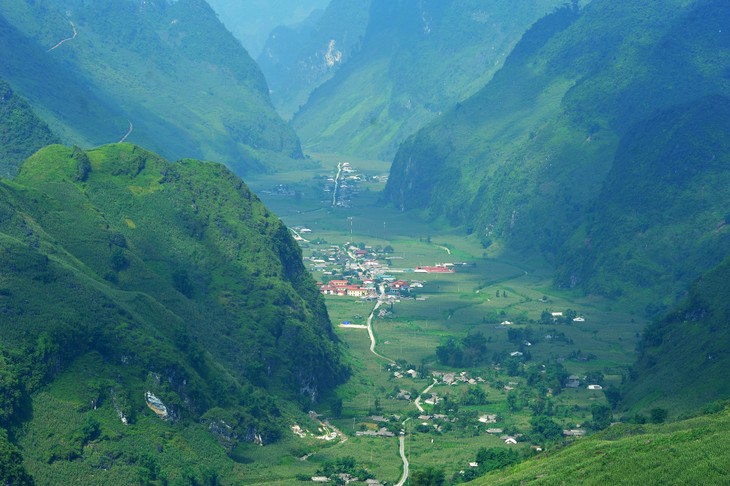 Duong Thuong Valley is dyed the green of corn fields, rarely seen at other times of the year. Duong Thuong Valley is dyed the green of corn fields, rarely seen at other times of the year. |
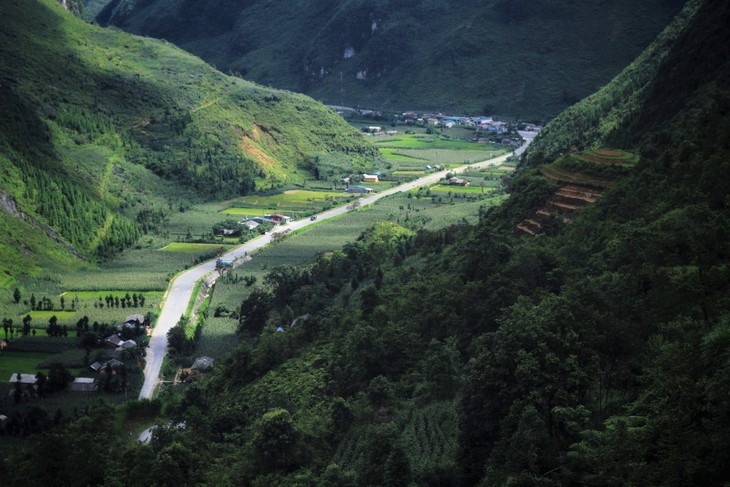 A bird's-eye view of Pho Cao Commune, home to 5,000 Hmong locals who reside in unique earthen homes featuring yellow walls and stone fences. A bird's-eye view of Pho Cao Commune, home to 5,000 Hmong locals who reside in unique earthen homes featuring yellow walls and stone fences. |
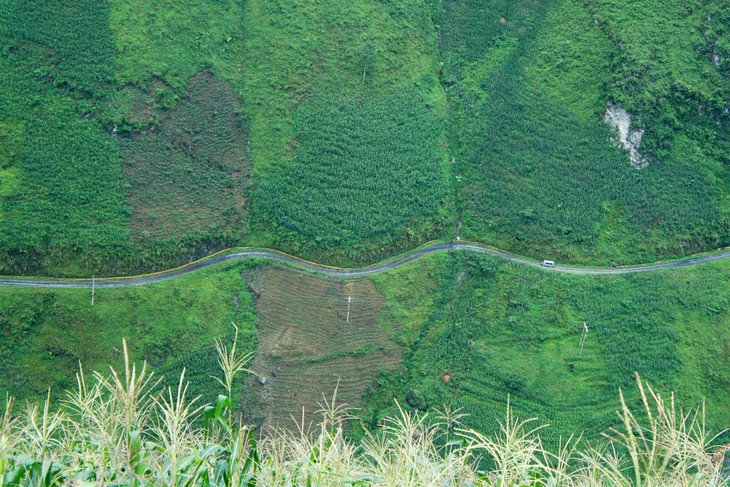 Ma Pi Leng Pass spans 20 kilometers (12.7 miles) and is considered the most dangerous in the northern mountains. Negotiating the pass is a tough task, even for the most seasoned travelers. Ma Pi Leng Pass spans 20 kilometers (12.7 miles) and is considered the most dangerous in the northern mountains. Negotiating the pass is a tough task, even for the most seasoned travelers. |
 Dong Van karst plateau was recognized as a global geopark in 2010 by UNESCO. Traditional ‘trinh tuong’ houses with yin-yang tiled roofs are a signature of Dong Van. Created by the Tay and Nung minorities, these homes are built using a mixture of clay and mud. This architectural style creates a space that is warm in winter and cool in summer. Dong Van karst plateau was recognized as a global geopark in 2010 by UNESCO. Traditional ‘trinh tuong’ houses with yin-yang tiled roofs are a signature of Dong Van. Created by the Tay and Nung minorities, these homes are built using a mixture of clay and mud. This architectural style creates a space that is warm in winter and cool in summer. |
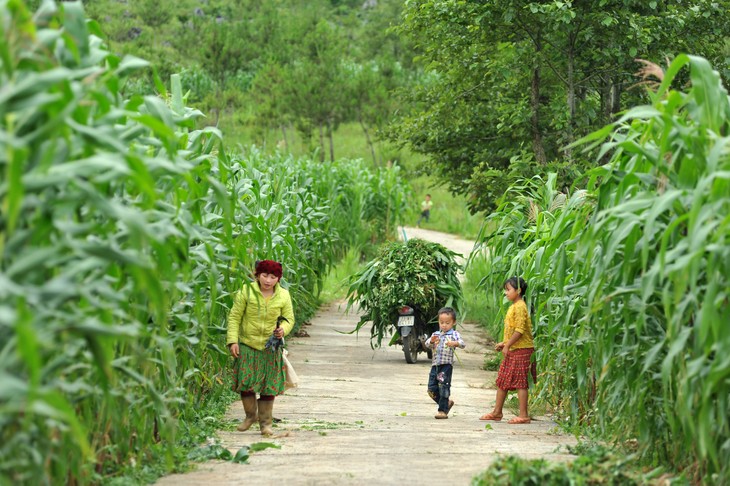 Farmers often harvest corn in June and July. However, harvest time depends on several factors, including rainfall and geographical location. Farmers often harvest corn in June and July. However, harvest time depends on several factors, including rainfall and geographical location. |
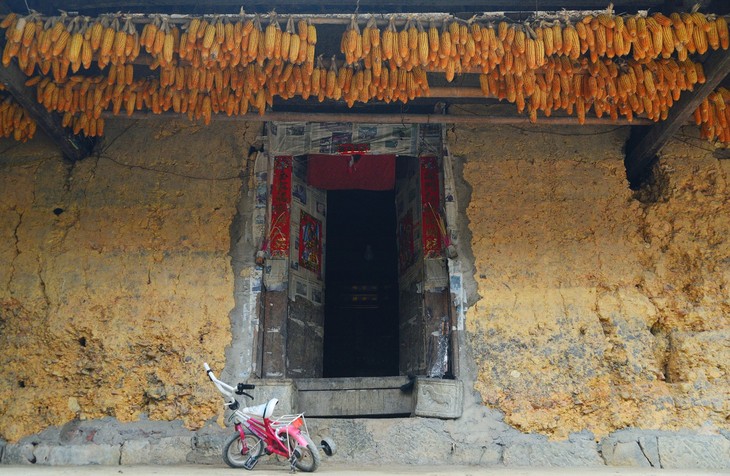 In Ha Giang, corn is commonly strung up along the gable or in the kitchen to dry, prior to being used for eating, making wine, baking cakes or feed. In Ha Giang, corn is commonly strung up along the gable or in the kitchen to dry, prior to being used for eating, making wine, baking cakes or feed. |
Nguyen Chi Nam/VNEXPRESS